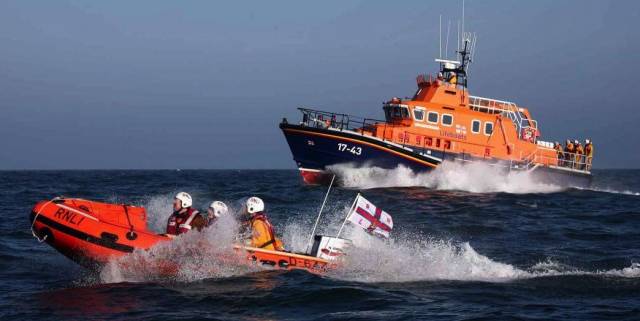Wexford RNLI rescued a lone sailor yesterday evening after his yacht hit a sandbank in heavy seas off Rosslare Point.
Volunteer lifeboat crews from Wexford and Rosslare Harbour RNLI were launched at 6.35pm following reports that a 26ft yacht had hit a sandbank somewhere off Wexford.
As little information was given on the location, both the inshore lifeboat from Wexford and the all-weather lifeboat from Rosslare Harbour proceeded to the Wexford Bar area which is known for its treacherous seas over a myriad of sandbanks.
Once on scene, Wexford RNLI spotted the vessel 100m north of Rosslare Point on Wexford Bar. Two crew members Damien Foley and David Maguire climbed onto the yacht to find a lone sailor tired from his 14 hour voyage from Fishguard.
With the yacht at anchor, the crew battled to release the anchor with waves crashing over them. The anchor broke and the yacht escaped been broken up.
The lifeboat helmed by Sinead Casey and with crew member Simon Casey also onboard, took the casualty vessel under tow and navigated its way through difficult lumpy seas out to deep water where the tow was dropped.
The crew members onboard the yacht then steamed the vessel over a dirty Wexford bar under the watchful eye off Rosslare Harbour RNLI.
The sailor and his yacht were safely brought alongside at Wexford Quay.
Speaking following the call out, Sinead Casey, Wexford RNLI helm said: ‘This was a challenging rescue but our crew who are highly skilled and trained managed to take the vessel under their control much to the relief of the tired sailor who was on a voyage from Wales to Scotland. Thanks to the great team effort by the volunteers from both Wexford and Rosslare Harbour, the sailor and his yacht were rescued from very difficult seas.’






























































